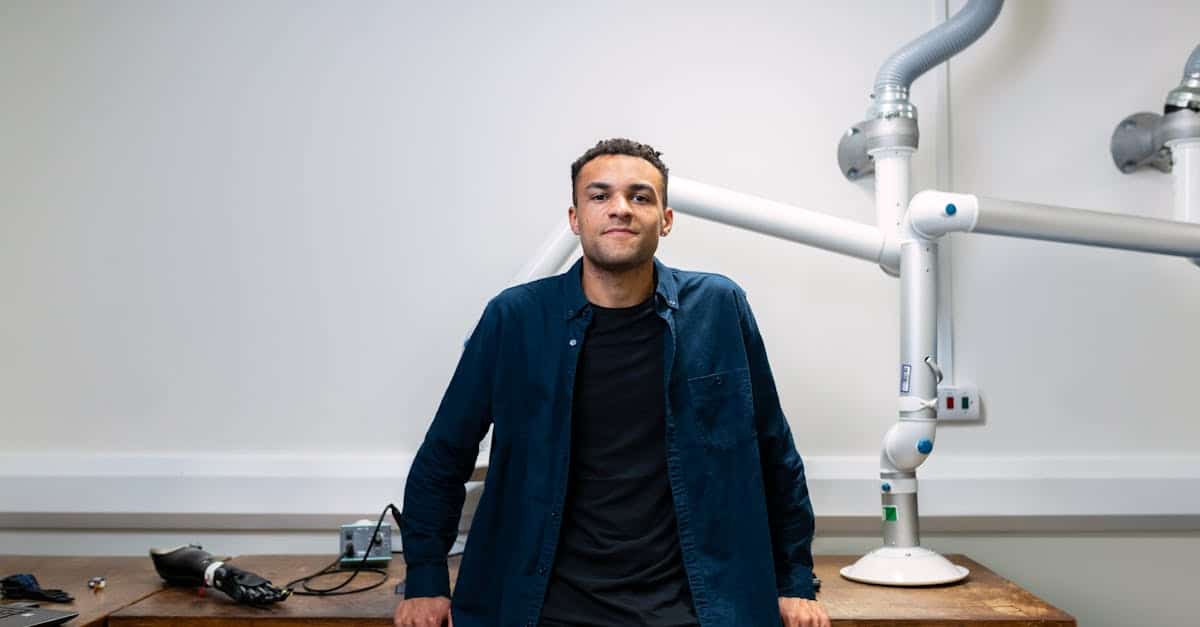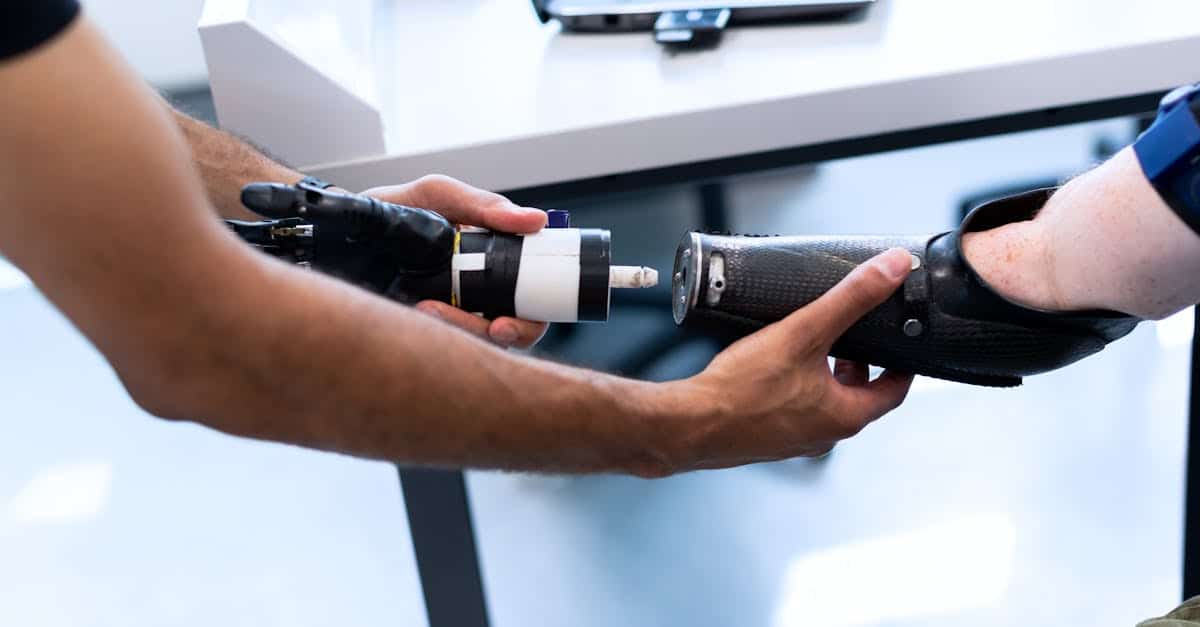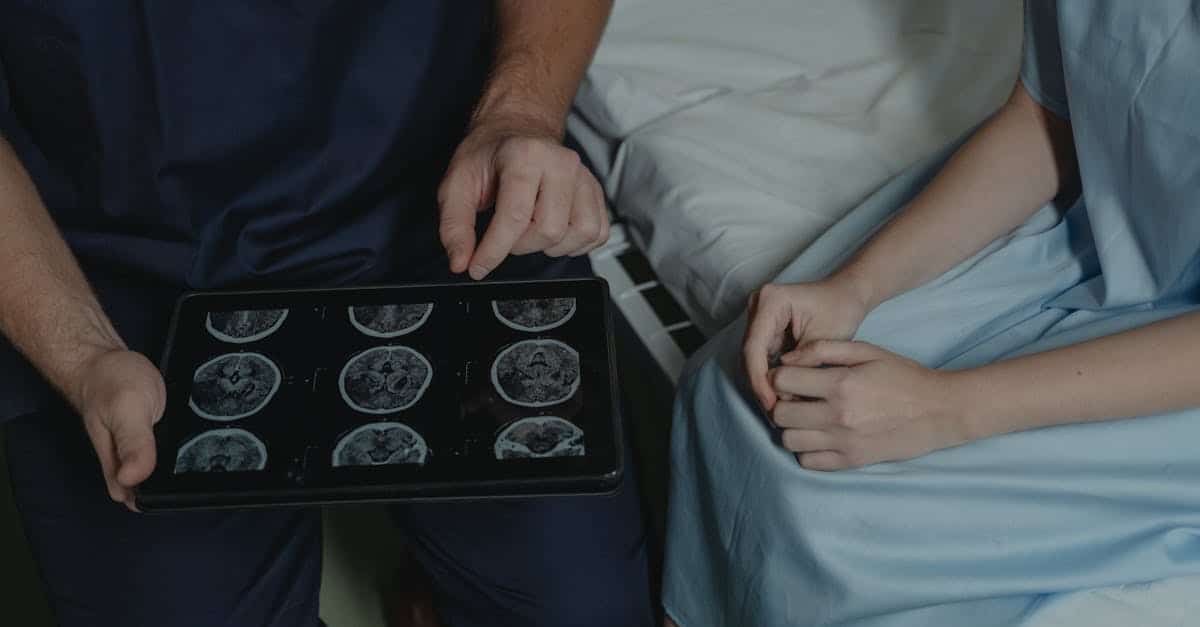Robotic technologies play an increasing role in the field of interventional neurology, bringing significant innovations for the treatment of brain disorders. Thanks to the integration of robotic systems, procedures such as mechanical thrombectomy benefit from greater precision and a reduction in complications related to practitioner experience. The emergence of robotics also allows for improved rehabilitation, facilitating longer sessions tailored to patient needs. Collaborations between neurotechnologies and robotics pave the way for innovative approaches in diagnosis and treatment, thus transforming medical practices by offering customized solutions for each.

Interventional neurology is a rapidly growing field that leverages technological advances to improve clinical outcomes for patients. Robotic technologies have gradually become essential in this area, transforming intervention and treatment methods for neurological disorders. The emergence of robotic systems allows for both optimizing clinical procedures and addressing the growing complexity of brain treatments.
One of the main advantages of integrating robotics in interventional neurology lies in the ability to perform minimally invasive procedures. These approaches reduce physical trauma for the patient and promote faster recovery. Furthermore, robot-assisted interventions allow for more precise operations, thanks to the stabilization of the surgical device and a reduction of involuntary movements, which is fundamental during delicate procedures, such as those performed on the brain.
A recent example is the use of robots for embolization of cerebral aneurysms. In this context, robotic tools assist doctors in introducing catheters into blood vessels, thereby minimizing the risks of complications. These systems include articulated arms that can be controlled with great precision, thus improving the success of interventions. The Pitié-Salpêtrière, a renowned hospital in France, has conducted promising research in this area.
Another notable aspect is the ability of robotic technologies to enhance clinical decision-making. With advanced algorithms and 3D visualization tools, doctors can gain a better understanding of the patient’s anatomy and the relationships between different vessels. This facilitates procedure planning and helps anticipate potential difficulties. Robotic systems can also integrate real-time health data, which provides decisions based on objective data rather than subjective.
Although robotics in interventional neurology offers many advantages, it is not without challenges. One of the main issues is the training of professionals. The training of doctors to use these technologies is essential to ensure optimal outcomes. A lack of experience in using robotic systems can lead to potential errors, making it crucial to implement rigorous training programs that incorporate not only simulations but also practical cases.
Moreover, access to robotic technologies may be limited by economic factors. The high costs of these tools pose a challenge to healthcare systems, particularly in less developed infrastructures. This raises ethical questions about equitable access to advanced care, which is often essential for patients. Innovations in financing, regulation, and the integration of robots in operating rooms will be crucial for optimizing their use on a large scale.
Robotics also promotes the development of neurotechnologies, which utilize brain-machine interfaces. These interfaces promise significant advancements in the treatment of neurological diseases and functional disabilities by allowing patients to control external devices through their brain activity. In this sense, robotics and neuroscience come together to create innovative solutions that improve not only clinical interventions but also act as rehabilitation tools.
The applications of robotics in the field of interventional neurology are not limited to surgery. They also encompass post-operative rehabilitation, where robotic devices assist patients in regaining motor skills. These assisted rehabilitation technologies allow for repetitive and personalized exercises, thus stimulating functional recovery. Recent studies have shown that robotic rehabilitation can yield superior results compared to traditional methods.
In the realm of brain imaging, robotics also plays a crucial role. Advanced neuronavigation systems allow for greater precision when exploring brain structures, thus facilitating diagnosis and intervention. Moreover, robotics is increasingly integrated into cerebral biopsy procedures, making these interventions safer and less invasive.
Another important element to consider is the interaction between robotics and artificial intelligence (AI). AI can not only enhance clinical decision-making by analyzing complex data but can also reduce risks associated with human error. The combined use of robotics and AI opens promising prospects for early diagnosis and personalized treatment of neurological disorders.
The ethical issues surrounding technology in interventional neurology, particularly regarding robotics, are also of great importance. Concerns about how these technologies impact the doctor-patient relationship, data privacy, and the implications of automation in care are points of debate that require rigorous reflection. It is essential to develop appropriate regulatory frameworks to guide the use of these technologies while respecting patient rights.
Finally, the future prospects regarding robotics and interventional neurology are very promising. As research continues and systems become increasingly sophisticated, we are likely to see an increase in the applications of robotics in medicine. The integration of robotic technologies into various procedures, ranging from surgical operations to non-invasive treatments, will undoubtedly transform the landscape of interventional neurology.
In summary, the impact of robotic technologies on interventional neurology manifests through a range of innovative clinical applications that improve the precision, safety, and efficiency of care. The challenges to be overcome should not be underestimated, but the potential benefits of such technological integration are undeniable and constitute an exciting path for the future of medicine.
For additional information on advancements in robotics in health, consult articles on medtech-revolution-technologique-dans-le-secteur-de-la-sante/”>the technological revolution in the health sector, as well as studies on new approaches in bariatric surgery and post-operative rehabilitation techniques. More information is also available on new methods of post-operative rehabilitation in orthopedics and on new techniques for functional rehabilitation.

Impact of Robotic Technologies in Interventional Neurology
Innovations in robotic technologies play an increasingly crucial role in the field of interventional neurology. By facilitating less invasive interventions and improving the precision of procedures, these advancements optimize clinical outcomes while reducing associated risks. This article presents an in-depth analysis of the impact of robotic technologies on the practice of interventional neurology, focusing on thrombectomy procedures, embolization, and patient rehabilitation.
Mechanical Thrombectomy and Robotics
Mechanical thrombectomy is an essential procedure for treating ischemic strokes. Robotic systems assist physicians during these interventions, ensuring more precise and controlled manipulation of instruments. In particular, the use of robotic arms helps overcome the lack of training among practitioners, a problem often encountered in modern medicine. These devices provide better stability and can be programmed to perform repetitive movements with remarkable accuracy.
Robot-Assisted Embolization of Aneurysms
The embolization technique is another notable application of robotics in interventional neurology. Using specific equipment, such as articulated arm robots, doctors can access cerebral aneurysms with minimal invasiveness. The reduction of hand tremors and the optimization of approach angles help decrease potential complications. Moreover, the data collected during these interventions provide a better understanding of aneurysm dynamics and help refine treatment strategies.
Robotic Rehabilitation
Beyond interventional procedures, robotics in rehabilitation represents a significant area of progress. Robotic devices enable patients to regain their motor skills after a stroke or other neurological diseases. Although robotic therapy is not always superior to traditional clinical interventions, it remains an interesting complement, offering longer and more intensive sessions. By adjusting the workload according to the specific needs of the patient, these technologies can enhance the effectiveness of rehabilitation processes.
Neurotechnologies and Brain-Machine Interfaces
Neurotechnologies, such as brain-machine interfaces, establish a bridge between patients and their brain capabilities. These systems can be used to predict movements and optimize motor rehabilitation. By promoting direct communication between the brain and robotic devices, they pave the way for personalized treatments and advances in understanding neurological pathologies.
Challenges and Futuristic Perspectives
Despite the undeniable advantages of robotic technologies in interventional neurology, challenges remain. The adoption of robotic systems requires specific training, and their cost can be a barrier to their integration into certain practices. Additionally, ethical questions regarding their use, particularly concerning safety and liability, necessitate thorough reflection. However, with advances in artificial intelligence and machine learning, the potential of robotic technologies is promising for transforming how neurological care is delivered.










